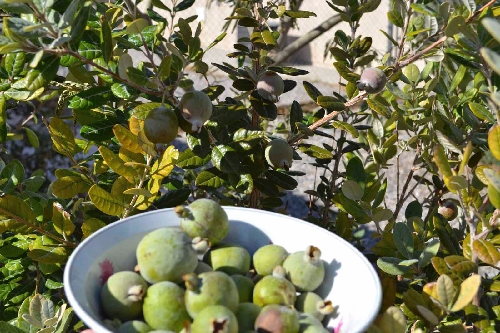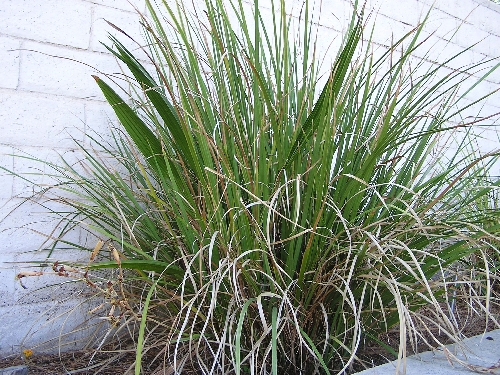Grow new palms instead of transplanting
Q: I have some palms growing right in the middle of what appear to be lilies. I would like to get rid of the palms. My thought was to dig them up when they go dormant, remove the palms, and replant. When is the best time to do this?
A: From your picture, it looks like you have a fan palm growing in what appears to be clumps of butterfly iris. These are not true iris but can still be dug up in the fall and replanted in a similar manner to iris.
Some of the leaves of the palms are quite wide because they are juvenile and have not yet split open into a frond. When palm leaves first emerge they are a very wide leaf blade and they open into a frond as they mature.
You will not be able to get the palm out easily because it is growing so close to the clump. If you want to save the palm, you will probably have to dig up the clump, as well as the palms, and then remove the palm from the clump to replant.
It will be tough since palm roots will be very established by now. Dig deep and get as much of the palm root system as you can. Normally these are started from seed but they can be moved when they are very young, which keeps the roots from going deep and makes it easier to transplant them.
These palms are very easy to start from seed so keeping it and moving it is not going to save you that much. If you want to germinate seeds, collect them from palm trees in the late spring or early summer and prepare a germination bed like you would a vegetable bed, making sure the bed is firmed up after you incorporate your organic matter.
Cover the seeds with about 1 inch of amended soil and keep it moist. Apply a light surface mulch like straw or something similar to keep the soil from drying out when they are germinating.
You should see germination in about four weeks if they don't dry out. Move them into containers or a new location in the landscape when they are still small. Don't let the roots dry out or you will kill them. They are tender to drought when they are young.
Q: This is more of a question about what I'm doing right than what I'm doing wrong. I was talking to friends in Las Vegas and they tell me they have tried growing pineapple guava for fruit and the answer seems to be don't even try. I'm in Pahrump and you can see from the photo my bush was packed with fruit. Strangely though, they bore fruit in November and I just assumed it would be earlier in the year. The biggest are large golf ball size. How can I increase the size of the fruit?
A: I would not agree that pineapple guava will not produce fruit in Las Vegas. Our problem is that the pineapple guava selected for our climate is selected as an ornamental plant, not to produce fruit.
Pineapple guava has more than 50 varieties available in the U.S. and they range from self-fertile types (produce fruit without another variety for pollination) to self-infertile types that need a different variety that blooms at the same time to form fruit. It sounds like you have a variety that is self-fertile and does not need a pollinizer plant.
However there are some varieties that are partially self-fertile so by getting a different variety that blooms at the same time you may see an increase in the amount of fruit. A 5-year-old plant should produce about 40 pounds of fruit, if fully productive.
Among these different pineapple guavas there is a wide range in fruit quality and desirability. Since you do not know which variety you have, you need to try a few things and see what happens.
If your plant is producing a lot of fruit, then you will not need a pollinizer. If your plant is producing only a few fruit, then you might want to get a second plant to help pollinate it.
Generally speaking, the size of the fruit will be determined by what variety you have, the number of fruit on the plant that grow to maturity and the moisture available to the plant during fruit development.
Place about 4 inches of wood mulch around the plant to reduce water stress. This will help make water available more evenly through the growing season. Make sure you fertilize the plant in January.
Thin or remove excess fruit when they are about the size of a quarter. Remove fruit that are deformed or unusually small, and make sure there is only one fruit at its point of attachment to the plant.
You will probably see larger fruit if you prune the plant more like a small tree than a shrub. The fruit should get aromatic when they are getting close to ripe. Harvest when the fruit color changes from green to light green or greenish-yellow.
When the fruit ripens they should easily separate from the plant or may even fall to the ground. I hope this helps.
Bob Morris is a horticulture expert living in Las Vegas. Visit his blog at xtremehorticulture.blogspot.com.





























